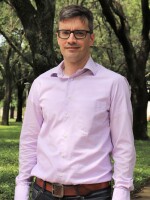For six weeks, Florida Matters will explore how the state's population boom is affecting important issues in our lives. In "Our Changing State," we’ll share stories from local residents about how change has affected them. We'll then invite experts in to answer questions you and your neighbors submitted through an online survey about each of these issues.
In the fourth part of our series, we’re talking about Florida's cultural history.
The discussion includes how we see ourselves, and how the rest of the world sees us, and how that's changing. Community members said they like the diversity and the infusion of new cultures old and new, and how the natural environment is an integral part of our identity.
WUSF's Dinorah Prevost met in Tampa's historic Ybor City neighborhood with Ormond Derrick outside a coffee shop on bustling East Seventh Avenue, the thoroughfare lined with the area's iconic archway lights. They talked about Derek's childhood in Ybor City and move to rural Pasco County, and how the 25-year-old has seen both neighborhoods change.

We asked you what questions you have about the issues through an online survey. Host Matthew Peddie then asked our expert guests about the questions submitted. The panel of guests includes:
- William Graveley, a longtime St. Petersburg resident, business owner and culinary arts teacher
- Joanna Robotham, curator of modern and contemporary art at the Tampa Museum of Art
- Sarah McNamara, an assistant professor of history at Texas A&M University. She’s the author of ‘Ybor City, Crucible of the Latina South’, which was just published this year.
Here's a sampling of questions and comments submitted through our online survey (some have been edited for length and clarity):
Tampa has a vibrant culture with many different groups — LGBTQ, Hispanics, the elderly. Ybor City is a treasure. I feel that as more people come to the state, we are becoming more homogenized. I lived in St. Pete for 20 years before moving to Tampa in 2009 and I see this happening to St. Pete. — Sharon Henry, Tampa
Sarah McNamara: I would push against the idea of homogeneity in general. All of the different groups of people who the listener noted, they exist within their own communities. Also the different categories that she provided intersect in different and exciting ways. When we say homogeneity, it's as though we are pushing towards some white-washing of what a past has been or imagining that everybody is like ourselves. But understanding that among these millions of people who are living in the area, everybody has distinct experiences due to their race, sexuality, nationality, nation of origin and class, and none of them exist in isolation ... So I would ask the listener to look around where she lives and to think, 'If I walk outside of this neighborhood, what does this look like?'
One of the interesting things about Ybor City is that it kind of falls into this. There's the Ybor that people can imagine ... where you can go to the Columbia Restaurant or you can go to the new Italian restaurant, Santo Stefano. But if you walk outside of [East] Seventh Avenue, Ybor City is, at its heart, a Black community now. It is one of the areas where there is affordable housing. But it is also a place that was once a Latinx community, and that shift wasn't a comfortable thing ... and still there is much resistance over whose legacy owns this area and what does memory look like. And I would push against the idea of homogeneity and ask the listener to go in different areas and walk outside of what feels most comfortable to them.
The beauty of Florida has historically been the infusion of new cultures added to the old. With the deluge of COVID relocators, they have no interest in assimilating or learning about Florida culture, history, or environment. They simply moved here to avoid public health recommendations of their previous home and to worship an extreme politician. — Katharine, Lakeland
William Graveley: Having lived here for most of my life, I see and feel the changes in the temperature. We had a real harsh winter one time and most of the guava trees died. And then we had canker come through and they had to eradicate most of the citrus trees. All of these things have changed. And now with the increase of the population and all of these people moving from other places who think that $1,800 a month for a studio apartment is a bargain, that's a problem when most people here still let make less than $20 an hour. I had a conversation with my nephew and one of his friends the other day. They said, 'We're making more money but it cost so much more to live. We're still just breaking even.'
Next week: Economics and wages
You can listen to the full conversation by clicking on the “Listen” button above. Or you can listen on the WUSF app under “Programs & Podcasts.






